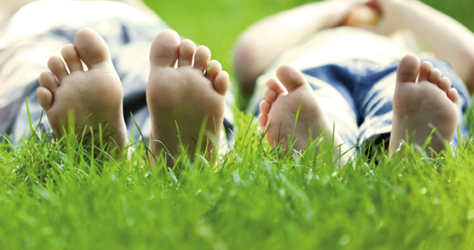A mum's handbag is never big enough...
However, having a few key items can help you to be prepared to treat minor ailments as soon as they happen.
At a glance
- Having a first aid kit to hand means you can treat minor ailments as soon as they happen
- Don't forget to pack your prescribed medicine and have enough for the duration of the holiday
- Check that painkillers are suitable for children and always read the instructions

Here are 10 things to include in your travel first aid kit for kids.
Enough prescribed medicine
If you or your baby takes regular medicine, be sure to ask your doctor for enough to last the duration of your holiday.
Thermometer
It’s worth packing a thermometer so you can quickly check your child’s temperature. Strip thermometers you can put on the forehead are small and accurate.
Liquid painkillers
Liquid painkillers that contain paracetamol or ibuprofen, such as Calpol or Neurofen are essential for relieving all kinds of pain, from a cut finger to a headache. They also lower fevers in colds and flu. Buy one that is suitable for babies and young children and follow the instructions. Buy boxes of sachets to avoid the 100ml 'plane rule - and just for general ease.
Plasters
Include a box of assorted plasters, and some extra-large ones for knees and elbows. They’ll come in useful for cuts, grazes, blisters, insect bites and even repairing things. Burn plasters work a treat on big grazes and stay put for days, meaning no tears when it has to come off.
Individual antiseptic wipes
These little sachets are great for cleaning wounds if you’re not near a bathroom. You can sterilize your hands with them, too. A top tip is a little emergency sweet treat - administer as required when then sting hits them - ouch!
Antiseptic cream
Dab this on after cleaning a wound to stop it becoming infected.
Insect repellent
Keep mosquitoes, midges and biting flies away with an insect repellent spray, roll-on or even sticky patch that can be put onto your baby’s clothing.
Most insect repellents are safe to use on babies over two months old, but do check the label and talk to your pharmacist. Spray the repellent onto your hands, then wipe it gently onto your baby’s face, hands and feet. Dress your baby in long sleeves and trousers to prevent insect bites too.
Antihistamine spray or cream
This is handy for soothing insect stings and bites and nettle stings. It also can help with some rashes, or allergies - be sure to check with a GP if in doubt.
Bandages and sticky tape
It’s worth keeping a bandage in the first aid kit in case of larger wounds or for strapping up a sprained wrist or ankle. It also works a treat as a placebo on your little ones. Secure the bandage with sticky tape.
Tweezers and scissors
Tweezers are useful for removing thorns and splinters. In the case of a bee sting, scratch the sting away with your nail rather than use tweezers, so you don’t squeeze the venom sac into the sting.
Don’t forget to include some contact details in your first aid kit too. These should be:
- Emergency services number (ambulance)
- Address and phone number of your nearest hospital
- The phone number of your hotel or campsite.